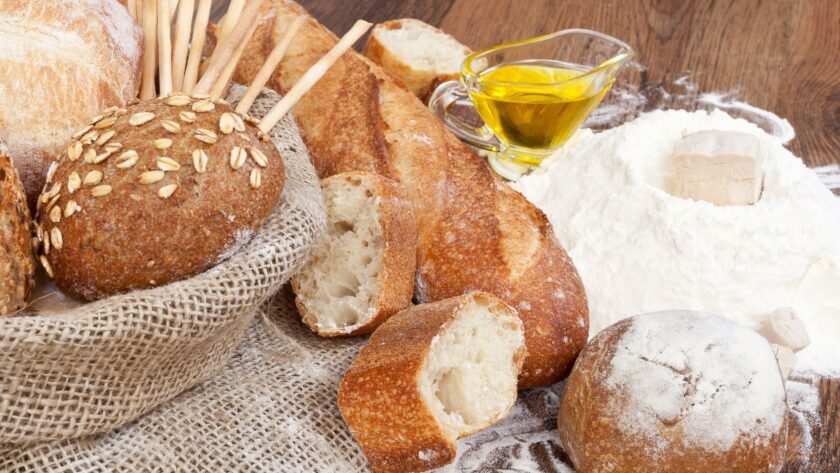Flour, whether white or wholemeal, supplies a large proportion of the nutrients required by our bodies to ensure growth and health.
Flour is used as the basis for many cereal food products including bread, biscuits, pasta, pastries and cakes. The nutrients it contains are continually supplied throughout an average person’s day. Our breakfast, lunch and evening meals usually contain products either based on flour, or thickened with flour.
Flour is an excellent source of protein, vitamins, fibre and complex carbohydrates. It is also low in fat and cholesterol.
Nutritional analyses have been carried out on flour samples from New Zealand flourmills. Samples ranged from flours used in making biscuits through to those used in bread. The results are contained in the table below.
As flour is the basis of many frequently eaten foods such as bread and pasta, we are easily able to take advantage of its varied nutrients.
| Retail Flour White |
Retail Flour Wholemeal |
South Island Bread Flour White |
North Island Bread Flour White |
South Island Biscuit Flour |
North Island Biscuit Flour |
|
| Protein | 11740 | 12360 | 12030 | 11510 | 8660 | 8610 |
| Calcium | 20.8 | 35.9 | 22.8 | 19 | 18.6 | 16.9 |
| Iron | 1.45 | 3.25 | 1.24 | 1.03 | 1.1 | 0.93 |
| Potassium | 194.8 | 406.7 | 183.1 | 194.6 | 191.7 | 176.3 |
| Total dietary fibre | 3140 | 12040 | 3250 | 3750 | 3230 | 3100 |
| Thiamin | 27 | 45 | – | – | – | – |
| Riboflavin | 9 | 15 | – | – | – | – |
| Niacin | 132 | 220 | – | – | – | – |
| Vitamin B6 |
16 | 45 | – | – | – | – |
How do the nutrients in flour help us?
The B vitamins, niacin, riboflavin and thiamin, are essential nutrients that cannot be made by our bodies in sufficient amounts for our needs. They need to be supplied by our diet and must be consumed regularly as they are not stored in our bodies.
The main function of thiamin is to break down carbohydrates into sugars to produce energy. Riboflavin is necessary for the production of energy in the body and niacin is essential for making use of the energy produced in all cells.
Calcium is an essential mineral for bone production and maintenance of healthy bones and teeth. New Zealander’s are actively encouraged to maintain a reasonable level of calcium intake throughout life. Iron is also an essential mineral required in our bodies. It assists with the transport of oxygen to the cells where it is used. It is part of a pigment called haemoglobin in the red blood cells. Potassium is contained inside the cells of our bodies. It enables cells to have the correct fluid mixture they need to work properly.
Dietary fibre is a mixture of many different components that give a rigid structure to plant cell walls. It helps food pass through our digestion system more easily and has been shown to reduce the effects of some common ailments such as constipation and other similar problems.
Nutrient content is affected by extraction rate (the amount of flour removed from the grain). White flour (usually extracted so that 78% of the grain remains in the flour) contains a lower proportion of some nutrients than 100% extraction rate wholemeal flour. The difference between wholemeal flour and white flour is that the bran and germ layers are removed during white flour milling. Wheat germ is a very good source of B vitamins and extremely rich in iron, zinc, manganese and copper. It is also the richest plant source of vitamin E.
Pure wheat bran is the richest known source of dietary fibre and contains minerals (such as manganese and iron) and vitamins (niacin, vitamin B6).
When you compare white flour and wholemeal flour in the table you will see that wholemeal flour contains on average 3.6 times the quantity of fibre contained in white flour. However, white flour is still a good general source of dietary fibre, and is also an excellent source of other essential nutrients, including carbohydrates, amino acids, magnesium, manganese, phosphorus, potassium, sodium, sulphur, zinc, selenium and lipids.
All flour is nutritions so no matter which type you use it will contribute towards a healthy diet.




